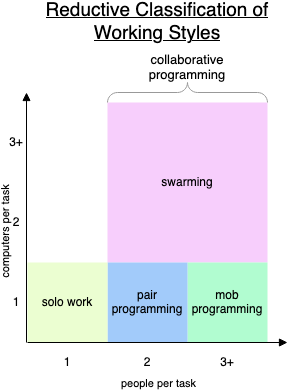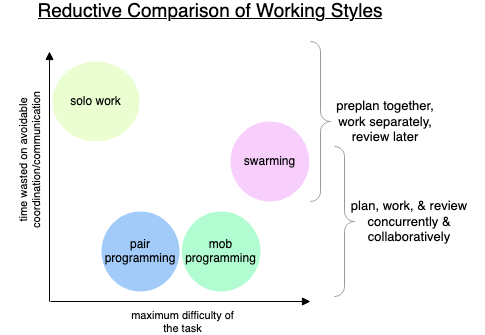Working Styles Classification
A reductive visual summary of collaborative programming terms like mobbing, pairing, and swarming
When a new team member (who doesn't have much pair programming or mob programming experience) joins our team, they encounter several different words for working styles: solo work, pairing, mobbing, and swarming. The three collaborative types may sound like synonyms, but when we use them we mean distinct things by each one.
In the first week there's usually a conversation to explain our lingo and give an introduction to our approach to mobbing and collaborative work. In the course of giving those explanations, I've formed a mental model for classifying working styles. It's admitedly reductive, but I find it helpful in differentiating the terms.


Something to add? Continue the conversation on Twitter
Written 2021-07